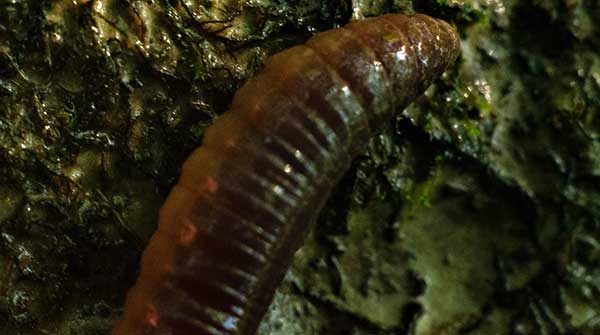Shifts in microbial communities just below the forest floor could have wide-ranging effects
Invasive earthworms are transforming soil composition in Canada’s boreal forests, according to recent research conducted at the University of Alberta. The study sheds light on how non-native earthworms are directly impacting the microbial community within the country’s boreal forests.

Justine Lejoly
Justine Lejoly, who pursued this research as part of her PhD in soil science within the Faculty of Agricultural, Life & Environmental Sciences, notes that these earthworms induce shifts in the community structure of bacteria and fungi residing in the soil. This transformation could have significant implications, as it likely alters the functioning of these microbial communities, which play a crucial role in various soil processes.
Microbes are key drivers of carbon and nutrient cycling, aiding in nutrient accessibility for plants and participating in soil carbon storage. Lejoly emphasizes that as earthworm invasion progresses in boreal systems, these changes in soil microbial communities could potentially impact forests on a large scale.
The study examined soil samples from multiple forest sites in Alberta and Quebec, revealing that earthworms influence fungal and bacterial communities in the first layer of mineral soil, located just beneath the organic-rich forest floor.
Lejoly expressed surprise at discovering a higher diversity of bacteria and fungi in worm-invaded soils, especially given previous research indicating earthworms’ detrimental effects, such as reduced plant diversity and increased drought sensitivity. More research is required to determine the potential benefits or drawbacks of this increased diversity.
“In theory,” Lejoly notes, “having higher diversity means there are more types of bacteria and fungi present, which potentially makes them more resilient to disturbance and better equipped to maintain soil functions in different scenarios.”
Additionally, the study found that the presence of earthworms increased the abundance of fungi capable of symbiotic relationships with trees. However, its consequences for tree growth were not explored.
Concerningly, the study revealed that earthworm presence favoured bacteria capable of rapid growth. This could potentially accelerate nutrient cycling and carbon release into the atmosphere.
This research aligns with previous work by Lejoly, which demonstrated that earthworm activity led to a reduction of up to 94 percent in the amount of carbon stored in the forest floor.
Moreover, increased nutrient levels due to earthworm activity could alter the composition of plant species in boreal forests, potentially favouring different tree and plant species.
This study could provide crucial insights into the large-scale alterations expected in forest soils due to earthworm activity. Understanding these changes could help adapt forest management practices as earthworm invasion continues in boreal systems.
| Troy Media
The opinions expressed by our columnists and contributors are theirs alone and do not inherently or expressly reflect the views of our publication.
© Troy Media
Troy Media is an editorial content provider to media outlets and its own hosted community news outlets across Canada.



